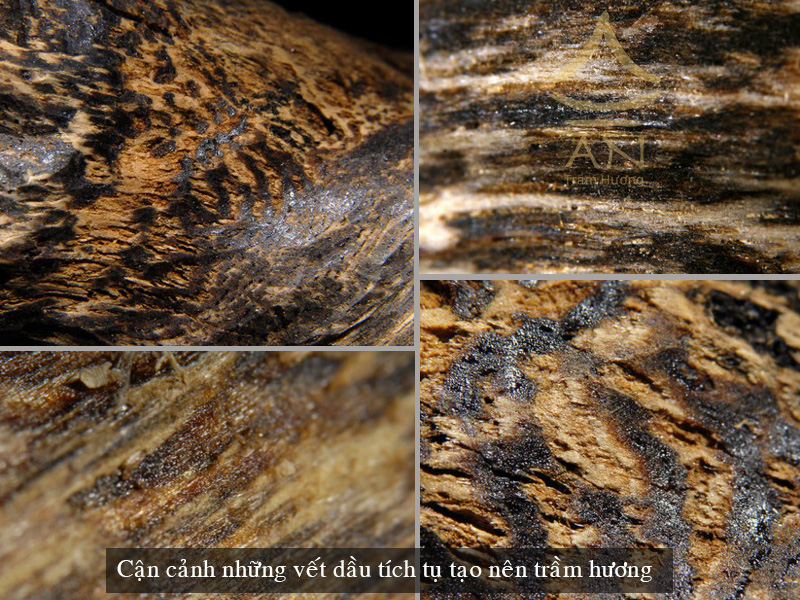Currently, Agarwood is considered the most valuable international forest product. Since ancient times, humans have known to “appreciate Agarwood” and use it as a treasure to determine the value, culture, and character of individuals in life. Let’s explore the knowledge about this precious treasure from various perspectives with An Agarwood:
What is Agarwood according to folklore?
The formation of Agarwood in Aquilaria trees involves many mysterious elements. According to folklore, Agarwood is formed when the heavenly fragrance carried by the wind lands on a wounded spot on the Aquilaria tree and mixes with the resin flowing from that wound. Over time, it undergoes transformation through the influence of soil, water, sunlight, wind, and other unique natural conditions. Therefore, it is not an exaggeration to say that Agarwood is a product that accumulates the spiritual essence of the earth and sky within itself.
Furthermore, Agarwood is also derived from an ancient legend. Poh Nagar, a beautiful goddess of the Cham ethnic group, often roamed in the ancient forests. Her divine fragrance blended with the Aquilaria trees, creating Agarwood. Hence, Agarwood carries the lingering “scent of mythology”. Presently, the goddess is still worshipped at the Poh Nagar Tower in Nha Trang, Khanh Hoa.
What is Agarwood according to scientific explanation?
Some species of Aquilaria trees ( including Aquilaria crassna, are the most common in Vietnam). During their growth and development, when encountering external factors such as mechanical injury, fungi, bacteria, plant hormones, pheromones, these trees have self-defense reactions by secreting a special resin (oil) to counteract these factors. Over time, this resin accumulates and diffuses, causing molecular changes in the wood, resulting in Agarwood.

The diverse characteristics of Agarwood are as follows:
- Various colors: black, brown, gray, and ash.
- Various textures: hard, soft, flexible, and elastic.
- Various tastes: bitter, spicy, sour, and sweet.
- Various shapes: round, twisted, pointed, and elongated.
- Various parts of the Aquilaria tree: trunk, branches, and roots.

The distinctive feature of Agarwood is its unique aroma when burned or unburned. When the oil content exceeds 25%, Agarwood can sink when dropped into water.
Therefore, not every Aquilaria tree has Agarwood. On average, in nature, only about 10% of Aquilaria trees aged 30 have Agarwood. Typically, Aquilaria trees with Agarwood are often decayed, with tumors, insect infestations, termite nests, ant colonies, fragments of bombs lodged in them, or damaged by storms or lightning strikes. The formation of Agarwood is a long process, making it highly precious and rare. Some high-quality, aged Agarwood types are more expensive than gold.

The names of Agarwood in different languages are as follows:
• English: Agarwood, aloeswood
• Chinese: chénxiāng (沉香), Cantonese: Cham Heong
• Japanese: jinkō (沈香)
• Thai: Mai Krishna (ไม้กฤษณา)
• Lao: Mai Ketsana (ໄມ້ເກດສະໜາ)
• Myanmar: Thit Mhwae
• Malaysia and Indonesia: Gaharu
• Cambodia: chann crassna (ខ្លឹមចាន់)
• Arab countries: Oud (عود). Western perfumes also often use Agarwood essential oil under the names oud or oudh.
• Tibet: agaru (ཨ་ག་རུ་)
• Sri Lanka: Walla Patta (වල්ල පට්ට).
Through the above article, we hope you have gained a profound understanding of “What is agarwood”.Click on Products to select the agarwood items that suit your preferences.

